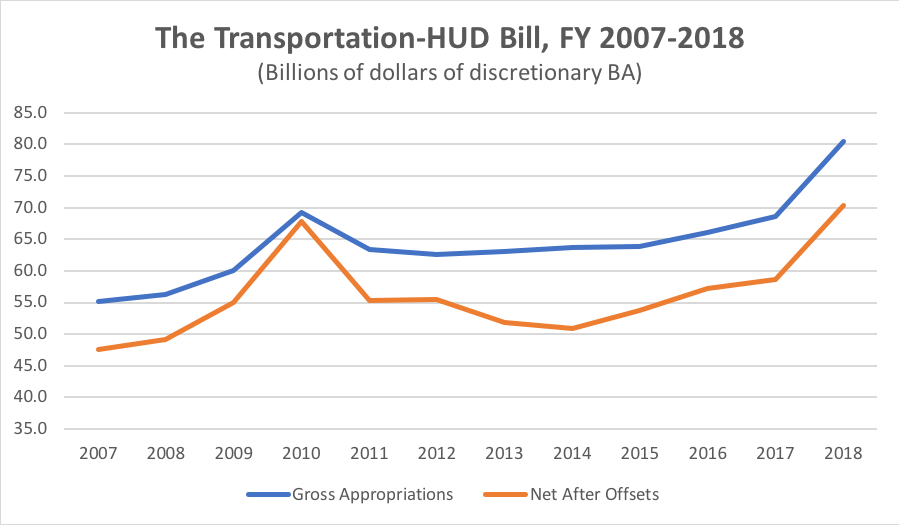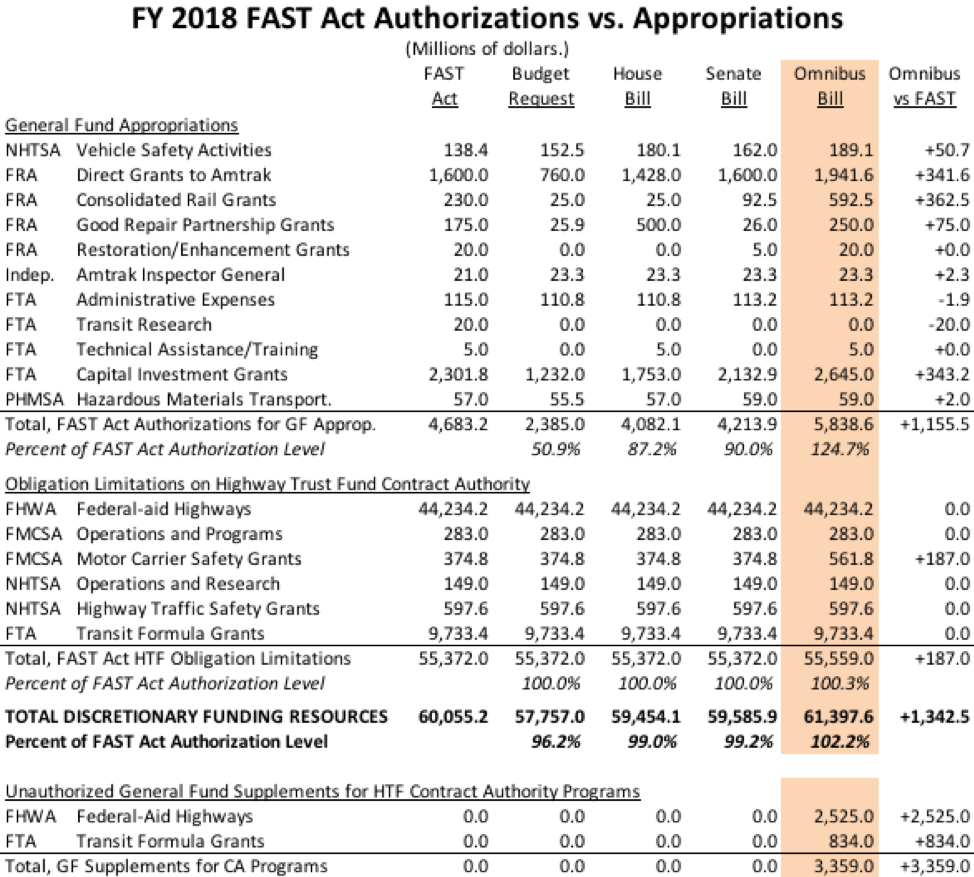March 22, 2018 (9:30 a.m.)
After three consecutive all-night staff negotiation sessions, and a morning, afternoon, and evening of tedious waiting, Congressional leaders have finally released the text of the fiscal 2018 omnibus appropriations legislation. The legislative text is here. For the text of the explanatory statements, the Energy and Water division is here, the Homeland Security division is here, the Interior/Environment division is here, and the Transportation-HUD division is here.
The House Rules Committee met last night and issued a closed rule to allow the House to consider the legislation today. If House leaders think they have the votes, the House will vote at around 1 p.m. today on the legislation But a lot has to go right to get the Senate to approve the legislation by midnight Friday night and avoid another partial government shutdown over the weekend.
We will continue to post articles throughout the day as they are finished – follow @JDwithTW on Twitter for instant notification when articles are posted.
Initial highlights:
Money. LOTS of money. (We have added a PDF file with a lot of DOT funding tables here including all account totals, the subcommittee budget allocation breakdown, major House-Senate differences, FTA CIG breakdown, and the evolution of the TIGER program.)
DOT gets a total of $27.4 billion in gross discretionary budget authority, which is $7.9 billion more than last year. $3.0 billion of that increase goes to the major ongoing discretionary programs at DOT, and another $4.4 billion goes to giving additional discretionary general fund money to transportation trust fund contract authority programs:

The Transportation-HUD bill gets a net $70.3 billion in discretionary budget authority, compared to $57.7 billion last year. This is more than the previous high, all the way back in FY 2010, which was $67.9 billion. But that took place during a collapse in the housing market, which took HUD offsetting receipts down to $867 million. This year, the HUD receipts are over $10 billion, and there are no rescissions in the bill, so the gross appropriations are $80.3 billion – an astounding $11 billion more than the high under President Obama.

(Ed. Note: This bill is so big it broke the y-axis of my chart and I had to raise the bar.)
The legislation meets or exceeds all the obligation limitations for FAST Act contract authority programs. (See below.)
In addition, the bill appropriates $4.4 billion from the general fund for programs that already receive trust fund contract authority, as a supplement to get towards the leadership promise of an additional $10 billion in appropriations from last month’s budget deal going towards infrastructure:
- $1.0 billion for the Airport Improvement Program (discretionary grants only – no formula – with an emphasis on non-primary and non-hub airports).
- $2.565 billion for federal-aid highways ($320 million for public/Indian lands and territories, $225 million for a new competitive bridge program in states with a population density of less than 100 persons per square mile, and the remainder for formula funding, given out in the obligation limitation ratio, with the same eligibilities and local set-aside rules as in the surface transportation block grant program).
- $834 million for mass transit formula grants ($400 million state-of-good-repair, $400 million buses and bus facilities (split via the FAST Act formula, so $209.1 million is bus formula, $166.4 million is bus discretionary, and $29.5 million is low-n0), $30 million fast-growth states, and $4 million bus testing).
The bill provides $2.565 billion for the mass transit Capital Investment Grant program – but does not set aside any of that money specifically for joint Amtrak-transit rail projects under section 5309(q) as the House bill did (Gateway). The agreement provides $499 million for new start projects that did not have grant agreements as of the budget request (so after you take off $100 million for the Maryland Purple Line, there is $399 million available), and there is $516 million for core capacity projects without grant agreements (this seems to be where the Gateway money went). $401 million is available for small starts. The bill language orders the Secretary to administer the CIG program “in accordance with the procedural and substantive requirements of section 5309” of title 49, and the report language orders the Secretary to obligate 85 percent of the money by December 31, 2019 and to “provide updated project ratings expeditiously at the request of the project sponsor” (again, Gateway).
The bill provides $1.5 billion for TIGER grants, $1 billion more than last year. After a $25 million administrative set-aside, $1.475 billion is left for grants. Of that amount:
- 30 percent is set aside for rural areas.
- Maximum grant size is still $25 million.
- The maximum amount given to any one state is still 10 percent of the total, but since the total is three times bigger, the maximum for any state is now $147.5 million.
- Planning grants make their first appearance in TIGER since FY 2014, with the Secretary allowed to give up to $15 million for them with no minimum grant size.
- The final bill does not contain the Senate language ordering DOT to use the Obama Administration’s FY 2016 criteria in giving out the FY 2018 grants, but it does say that “the Secretary shall not use the Federal share as a selection criteria in awarding projects.”
The bill provides $1.942 billion for Amtrak, $447 million more than last year. $322 million of that increase is for the Northeast Corridor. And the other $125 million of the increase is for the National Network.
The bill provides a total of $863 million for the three new rail grant programs established by the FAST Act, which only got a collective $98 million last year.
- $593 million is for the consolidated (CRISI) grant program, and of that, half ($250 million) is set aside for positive train control (PTC) implementation grants under 49 U.S.C. §24407(c)(1) . Another $35.5 million is set aside for “eligible projects under section 24407(c)(2) of title 49, United States Code, that contribute to the initiation or restoration of intercity passenger rail service” which we think means bringing back the old Sunset Limited from Orlando to New Orleans, where much of the infrastructure was destroyed by Hurricane Katrina and not rebuilt.
- $250 million for the federal-state partnership state of good repair grant program, $225 million more than last year but half the House level, and the final bill does not contain House language that more or less directs the money to Gateway projects.
- $20 million is for restoration and enhancement grants.
The Federal Aviation Administration gets an even $18 billion. As mentioned above, the airport improvement program gets an extra $1.0 billion in general fund money for discretionary grants to smaller airports in addition to the $3.35 billion obligation limitation. The capital account gets $3.25 billion and the operations account gets $10.21 billion. The final bill does not contain the Senate provisions allowing a PFC increase, or banning cell phone calls on airliners, or forcing the Administration to allow traffic with Cuba.
The bill funds programs authorized by the FAST Act at 102.2 percent of the authorized aggregate level. Highway Trust Fund obligation limitations are at 100.3 percent of the FAST level (there is a small boost for FMCSA to use old contract authority) and the general fund appropriations authorized by FAST receive 124.7 percent of their authorized levels.

[keep checking back to this page for more updates]






